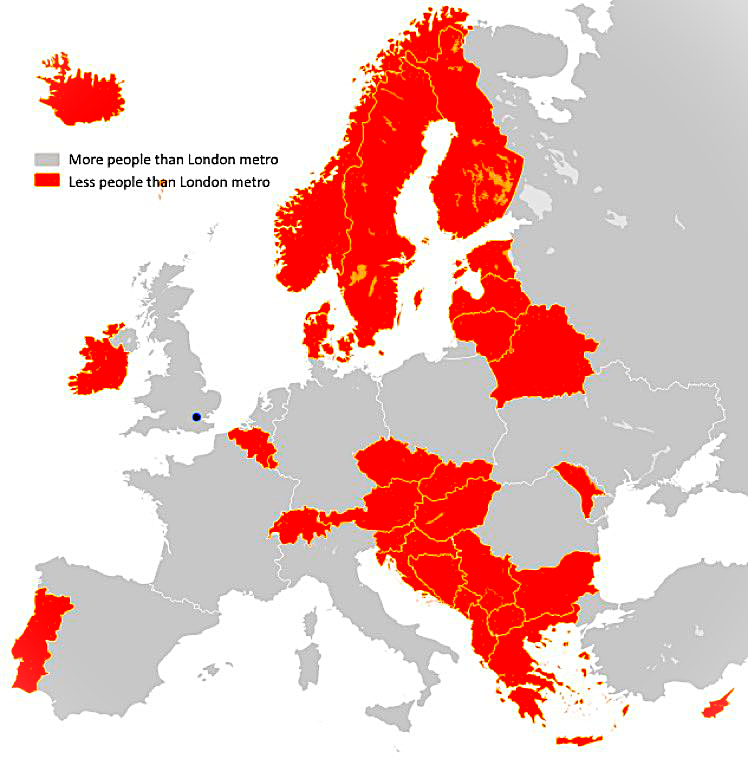Mildly interesting
-
The Democrat party is perfectly worthy of the braying jackass.
-
@jon-nyc said in Mildly interesting:

The London Metro is a free newspaper. I'm guessing the reference is to the Tube or London Underground. More daily/yearly users?
@AndyD said in Mildly interesting:
@jon-nyc said in Mildly interesting:

The London Metro is a free newspaper. I'm guessing the reference is to the Tube or London Underground. More daily/yearly users?
No it meant London metro area. I didn’t post the associated text.
-
@Mik said in Mildly interesting:
Here it’s referred to as Greater Cincinnati.
Outside of Cincinnati, it’s referred to as Cintucky.
Seriously, though? In DC, the term is used to represent both the train system, and the general region, including areas that fall out side of the strict DC border… Alexandria, Arlington, Fairfax County, Montgomery County, Prince George’s County are all considered to be part of the Washington, DC Metro Area.
-
The Kyoto International Conference Center (ICC Kyoto) features a visible seismic damper in its underground parking, engineered by Kajima Corporation, one of Japan’s leading construction firms. This red steel component is a hysteretic damper, designed to deform under seismic stress and convert kinetic energy into heat, reducing structural loads on the column.
The damper forms part of Kajima’s Seismic Isolation System (KSI) technologies, developed after the 1995 Great Hanshin Earthquake, which exposed critical weaknesses in mid-century concrete structures. These systems have since been widely adopted in public infrastructure retrofits across Japan.
ICC Kyoto, designed by Sachio Otani and opened in 1966, is a key site for Japan’s architectural modernism. While the main brutalist structure remains intact, its annexes have undergone retrofitting to meet post-1995 seismic standards. Kajima’s decision to leave the device exposed supports inspection visibility and reflects Japan’s approach to seismic transparency in structural design.
-
-
-
Wombats are the only animals on Earth that produce cube-shaped poop — a quirky mystery that puzzled scientists for years. But now, researchers have figured out how this Australian marsupial pulls off the feat. By dissecting wombats and analyzing the elasticity and stiffness of their intestines, scientists discovered that the wombat’s gut has uniquely structured regions with varying flexibility. These regions contract in an uneven rhythm during digestion, slowly molding the feces into distinct six-sided shapes. To confirm their findings, the team even built a 2D mathematical model that simulated how these intestinal contractions form cubes over time. Unlike other animals, whose intestines squeeze poop in smooth, uniform waves, wombats have sections of muscle that squeeze faster or slower depending on their stiffness, shaping sharp corners as digestion progresses. The evolutionary reason? Wombats mark their territory by placing their droppings on rocks and logs — and cube-shaped poop simply doesn’t roll away. Scientists believe this strange biological trick could inspire new engineering methods for shaping materials more precisely.

-
73% of all women from every class survived the sinking of the Titanic.
Only 19% of men survived.
@jon-nyc said in Mildly interesting:
73% of all women from every class survived the sinking of the Titanic.
Only 19% of men survived.
Speaking of paleolithic emotions and medieval institutions. It's no wonder why young men might be looking around and wondering about these sorts of attitudes.
-
The blokes probably paid for the tickets so it's only fair.
-
@jon-nyc said in Mildly interesting:
73% of all women from every class survived the sinking of the Titanic.
Only 19% of men survived.
Speaking of paleolithic emotions and medieval institutions. It's no wonder why young men might be looking around and wondering about these sorts of attitudes.
@Horace said in Mildly interesting:
@jon-nyc said in Mildly interesting:
73% of all women from every class survived the sinking of the Titanic.
Only 19% of men survived.
Speaking of paleolithic emotions and medieval institutions. It's no wonder why young men might be looking around and wondering about these sorts of attitudes.
Especially when we are harangued about being sexists and patriarchs.
Swim, bitch, swim.

